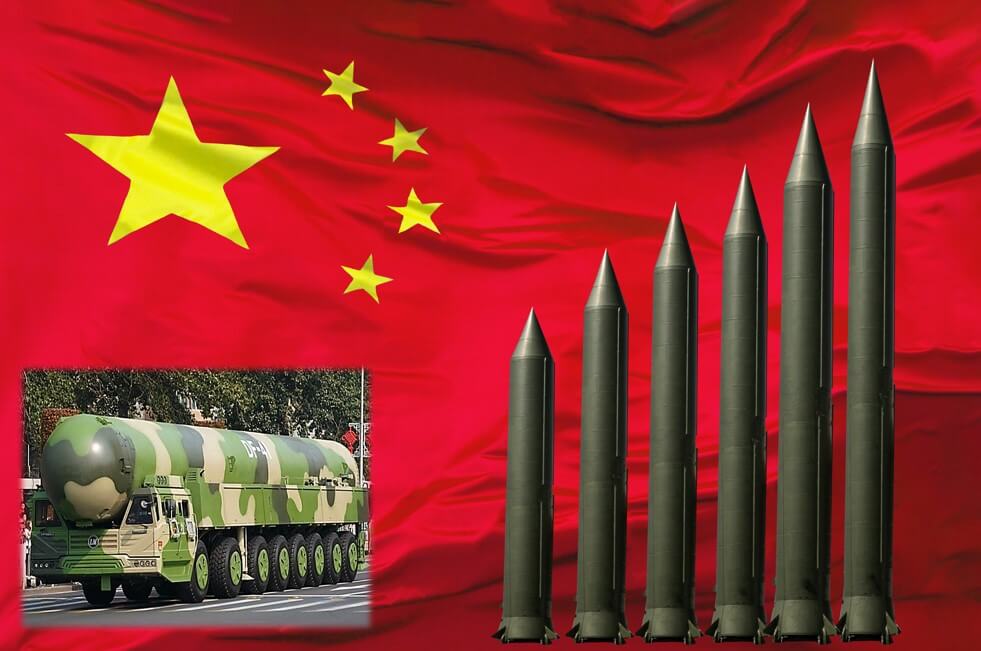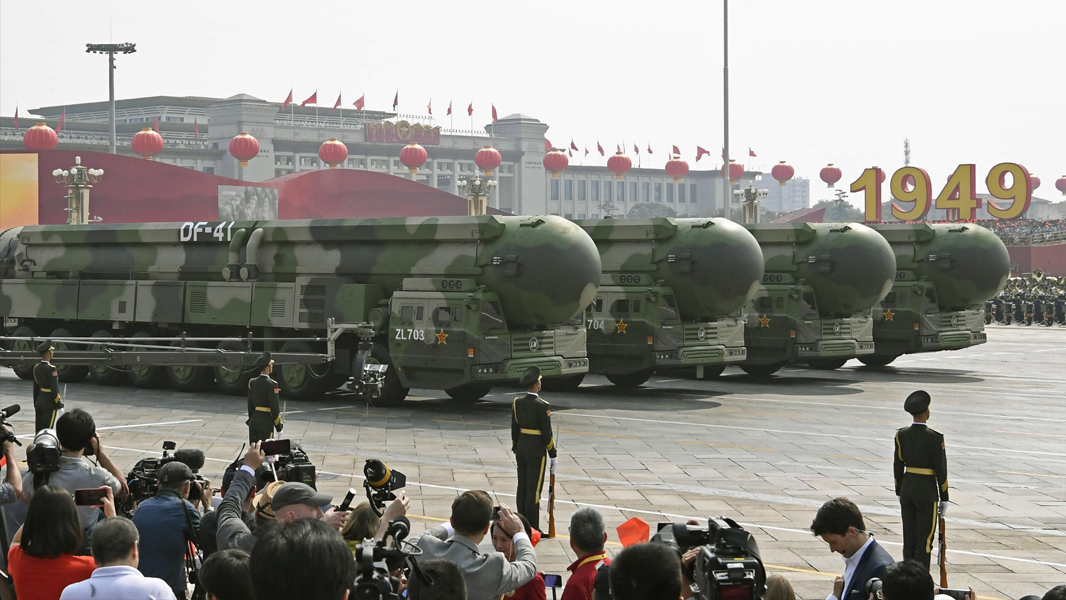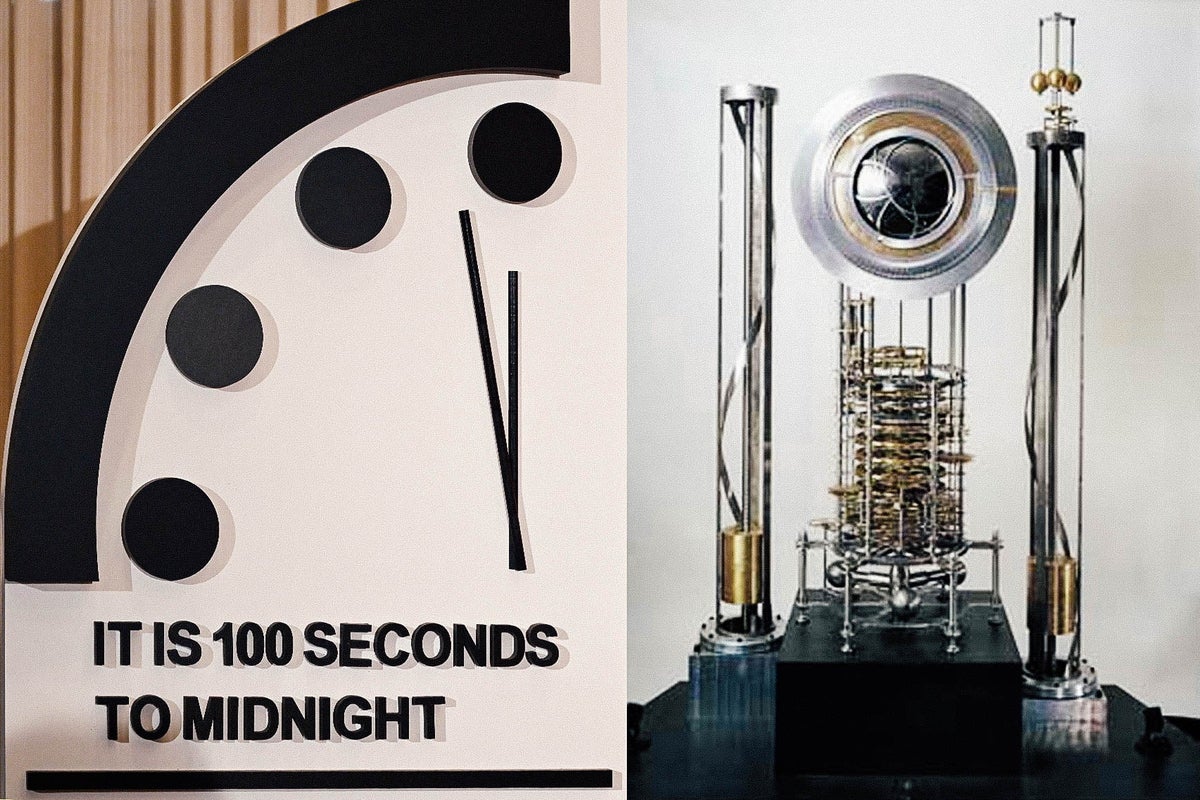Russia, U.S., and China Lead the List of Countries with the Most Nuclear Weapons in 2023; What about India and Pakistan?
As of 2023, the countries with the largest nuclear arsenals are Russia, the United States, and China, which occupy the top three positions. Russia is reported to have the most nuclear weapons globally.

India and Pakistan, both neighbours and historical rivals, also possess nuclear weapons. While Pakistan is known to have a significant number of nuclear warheads, however, the specific count is not widely confirmed. On the other hand, India is reported to possess approximately 164 nuclear warheads.
Russia’s Top Game
Russian President Vladimir Putin had recently made a declaration to enhance Russia’s nuclear arsenal, once again implying the potential use of nuclear weapons. According to estimates by the Federation of American Scientists, Russia’s arsenal already surpasses that of the United States.
In terms of total nuclear weapons, Russia currently possesses more than the United States. However, according to estimates from the Federation of American Scientists, Russia has fewer deployed or ready-to-use nuclear weapons compared to the United States.

In the year 2023, Putin revealed his plans to deploy the RS-28 Sarmat missiles, which are long-range ballistic missiles capable of carrying multiple large nuclear warheads, as well as hypersonic missiles.
Moreover, in response to President Joe Biden’s visit to Kyiv, Putin decided to suspend Russia’s participation in the New START nuclear arms control treaty with the United States. He stated that Russia would not permit NATO to inspect its nuclear arsenal, as stated in Article XI of the treaty.
The United States Nuclear Weapons
The United States has deployed 1,644 strategic, long-range nuclear weapons that are intended to target cities and military support structures, along with 100 tactical weapons specifically designed for battlefield use. On the other hand, Russia has deployed 1,588 strategic missiles, but there is no known deployment of tactical nuclear weapons as of 2022.
In a hypothetical scenario involving a Russian nuclear attack against Ukraine, experts suggested that Russia would likely employ tactical missiles to target Ukrainian troops or command centers.
While the United States has more nuclear weapons earmarked for destruction (1,720) compared to Russia (1,500), Russia has a significantly higher number of undeployed missiles (2,889) in comparison to the United States (1,964). The specific composition of these undeployed missiles is not clearly specified.
Following the invasion of Ukraine, President Vladimir Putin heightened the readiness of Russia’s nuclear arsenal just three days after the event. Putin has since made repeated threats of nuclear destruction, both implicitly and explicitly, citing perceived aggression from NATO and the United States.

According to a leading think tank, the number of operational nuclear weapons in the arsenals of major military powers is increasing. The global estimate stands at 12,512 warheads, with a significant portion believed to belong to China. The think tank’s analysts express concern that the world is entering one of the most dangerous periods in human history, emphasizing the gravity of the situation.
Countries’ Nuclear Arsenals from Largest to Smallest
Russia (5,977 warheads)
United States (5,428)
China (350)
France (290)
United Kingdom (225)
Pakistan (165)
India (160)
Israel (90)
North Korea (20)
The current global estimate suggests that there are approximately 12,512 warheads worldwide, with 9,576 of them being in military stockpiles and ready for potential use. This marks an increase of 86 warheads compared to the previous year, signalling the end of a period of gradual decline in nuclear weapons following the Cold War. According to the Stockholm International Peace Research Institute (S.I.P.R.I.), China is believed to possess 60 of the newly added warheads.
Among the other countries, the increase in warheads is attributed to Russia (12), Pakistan (five), North Korea (five), and India (four).
This rise in operational warheads occurs despite a statement made in 2021 by the five permanent members of the United Nations Security Council (the U.S., Russia, China, the U.K., and France), affirming that “nuclear war cannot be won and must never be fought.”
Russia and the U.S. collectively hold nearly 90% of all nuclear weapons globally. Additionally, both countries possess over 1,000 warheads, each that was previously retired from military service, with plans for gradual dismantlement.
Out of the total 12,512 warheads worldwide, including retired ones awaiting dismantlement, S.I.P.R.I. estimates that 3,844 are deployed with missiles and aircraft ready for use.
According to S.I.P.R.I., approximately 2,000 of the operational warheads, mostly belonging to Russia and the U.S., are kept in a state of high operational alert, meaning they are fitted to missiles or stored at airbases hosting nuclear bombers.
S.I.P.R.I. acknowledges that assessing the full extent of nuclear arsenals has become challenging due to reduced transparency from countries like Russia, the U.S., and the U.K., following Vladimir Putin’s invasion of Ukraine.

China, the world’s third-largest nuclear power, is believed to have increased its number of warheads from 350 in January 2022 to 410 in January 2023. However, S.I.P.R.I. predicts that China’s arsenal, although growing, will not surpass those of the U.S. and Russia. China has never officially declared the size of its nuclear arsenal, and estimates largely rely on data from the U.S. Department of Defense.
In 2021, commercial satellite imagery revealed that China had started constructing numerous new missile silos across its northern territory, indicating an expansion of its nuclear capabilities. This development has raised concerns and questions about China’s intentions and its aim to maintain only the minimum nuclear forces for national security.
France (290) and the U.K. (225) are the next largest nuclear powers after the U.S., Russia, and China. The U.K.’s operational arsenal is expected to grow following an announcement two years ago to raise its limit from 225 to 260 warheads. However, the U.K. government has decided not to publicly disclose the quantities of its nuclear weapons, deployed warheads, or deployed missiles due to increased global tensions.
The breakdown in cooperation over the future of nuclear weapons is evident. The U.S. suspended its bilateral strategic stability dialogue with Russia after the invasion of Ukraine, and Russia announced its suspension of participation in the last remaining nuclear arms control treaty between the two countries. Russia has increasingly mentioned the risk of nuclear war since its invasion of Ukraine, with President Putin stating that he has put Russia’s nuclear deterrent on high alert.
The current state of affairs has prompted concerns from experts at S.I.P.R.I., who emphasize the need for governments worldwide to find ways to cooperate, reduce geopolitical tensions, curb arms races, and address the worsening consequences of environmental breakdown and rising global hunger.
Big Number, Important Facts
The Tsar Bomba, detonated by the U.S.S.R. on October 30, 1961, holds the record as the largest nuclear bomb ever to explode. Its destructive power is estimated to be equivalent to 50 megatons of T.N.T. To put this into perspective, it was roughly 1,500 times more powerful than the combined yield of the atomic bombs dropped on Hiroshima and Nagasaki in 1945.
The detonation of the Tsar Bomba reportedly caused windows to shatter 560 miles away, and the resulting mushroom cloud reached a height of 40 miles, with a diameter of 59 miles at its top. The previous record-holder for the largest nuclear bomb was the U.S. Castle Bravo, which had less than half the explosive yield of the Tsar Bomba.
Modern nuclear weapons typically have lower yields compared to the bombs of the past. According to The Washington Post, their power ranges between 10 and 100 kilotons. However, even these smaller-scale weapons would still far surpass the destructive capability of the bombs used in Hiroshima and Nagasaki, which had blast yields equivalent to 15,000 and 21,000 tons of T.N.T., respectively.

The Doomsday Clock, created in 1947 by scientists including Albert Einstein and J. Robert Oppenheimer, serves as a symbolic representation of humanity’s proximity to self-destruction. On January 24, the Bulletin of the Atomic Scientists set the clock at 90 seconds to midnight, the closest it has been since its inception. The clock reflects the severity of threats such as biological, nuclear, and climate-related risks to human survival. In 1991, following the fall of the Soviet Union, the clock was set at 17 minutes to midnight, indicating a relatively lower threat level.
However, this year, the clock was moved closer to midnight due to the increased risk of nuclear destruction following Russia’s invasion of Ukraine, as stated by the Bulletin. Additionally, factors such as the Covid-19 pandemic and climate change also influenced the decision.




